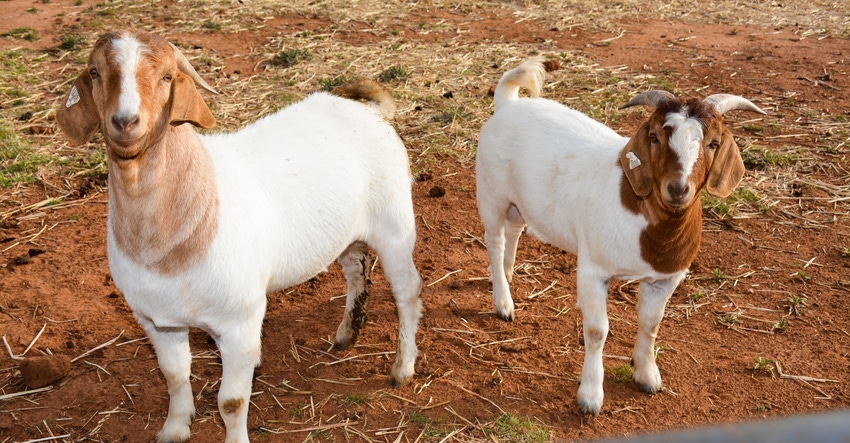
Sheep and goat producers wanting to sell their animals should check with the establishment conducting the sale to make sure coronavirus precautions have not caused disruptions in operational hours or services.
“A producer’s time, energy and effort are as much business investments as travel costs and the well-being of animals being transported from one place to another,” said JJ Jones, Oklahoma State University Extension area agricultural economist for southeastern Oklahoma. “Events are being canceled across the state, region and nation, often on short notice. Calling and verifying before setting out is just good management.”
The attraction of selling sheep or goats given current market conditions can be enticing.
“While the coronavirus pandemic has had a demonstrable negative effect on cattle prices, sheep and goat prices have remained strong thus far,” Jones said.
Current prices for goats in the 40- to 60-pound range are averaging about $3.19 per pound in San Angelo, Texas. This figure is in line with March 2019 prices. Slaughter lambs in the 60- to 90-pound range are averaging $2.59 per pound, which is well above year-ago levels. San Angelo and New Holland, Pennsylvania, are the nation’s primary sheep and goat markets.
As with any animal agriculture enterprise, goat and sheep prices are influenced by the natural production cycle.
“The typical price pattern during a year reflects how livestock biology drives breeding, birth schedules and animal growth,” said Scott Clawson, OSU Extension area agricultural economist for northeastern Oklahoma. “Prices are generally higher for goats and sheep in the spring, but nobody knows how the current coronavirus pandemic and social distancing might disrupt what has been the normal flow of things.”
For example, in San Angelo, the high prices in the spring for meat goats are historically greater than 10% of the annual average, but in New Holland the high prices typically reach about 5% above the annual average. However, the seasonal price difference tends to be steadier and last longer in New Holland than in San Angelo. “Normally we would stress how knowledge of seasonal and geographical price patterns can be used to enhance producer marketing strategies, sometimes by adjusting production,” Clawson said. “With the uncertainty about how the coronavirus pandemic may disrupt normal patterns, producers’ best bet this year may be to practice due diligence, contact a facility ahead time and understand their cost of production and breakeven.”Source: is OSU, which is solely responsible for the information provided and is wholly owned by the source. Informa Business Media and all its subsidiaries are not responsible for any of the content contained in this information asset.
About the Author(s)
You May Also Like




